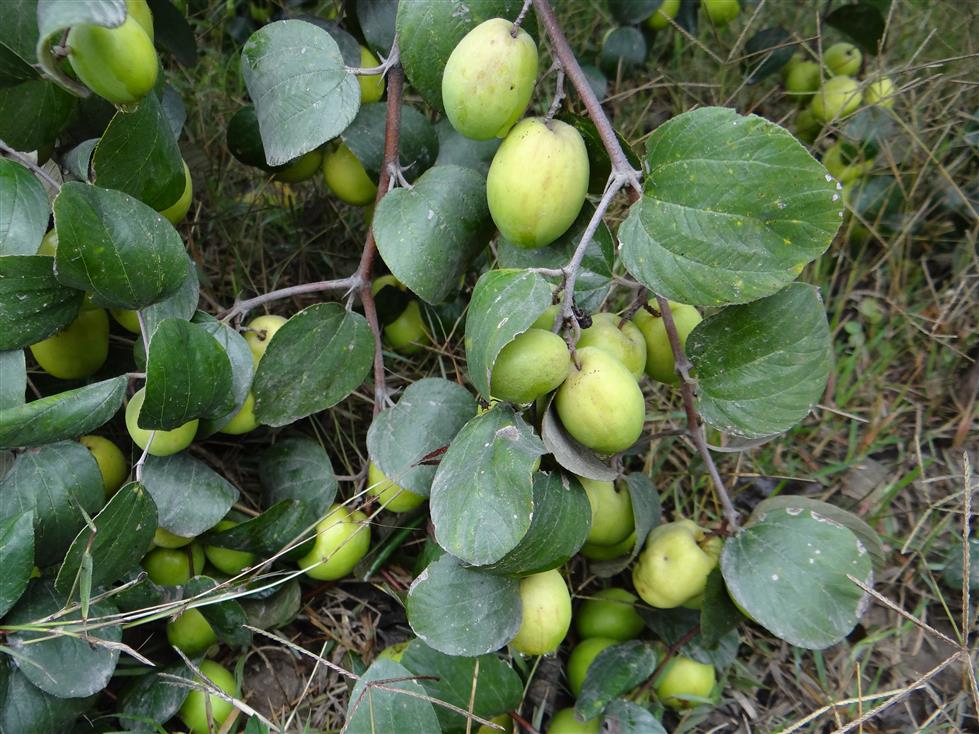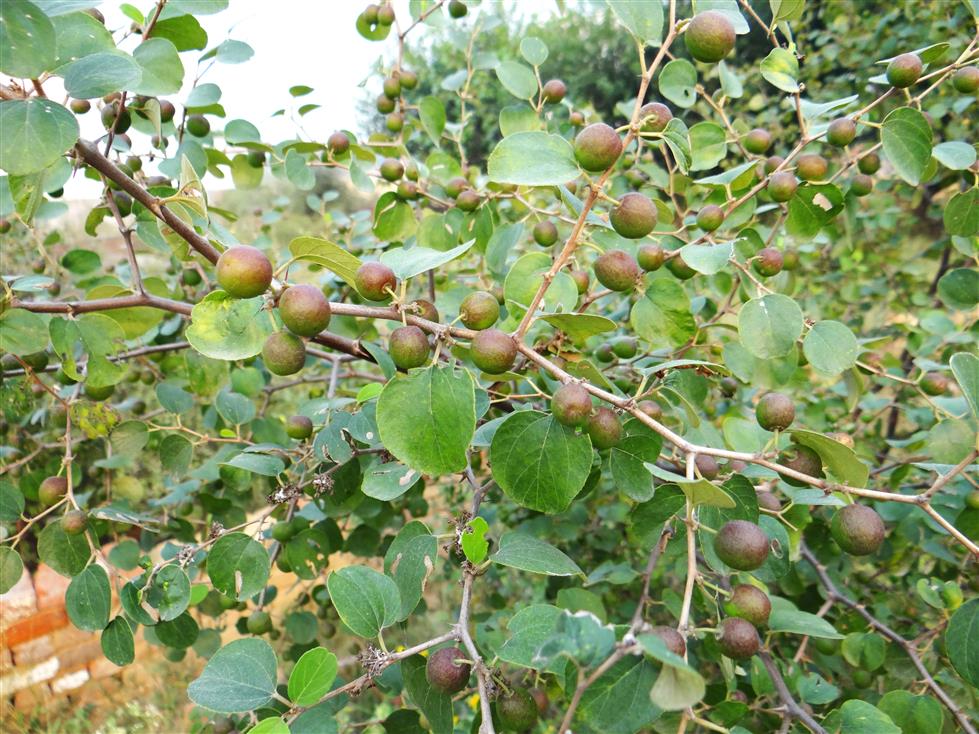RHAMNACEAE
Deciduous or evergreen shrubs or trees, rarely woody climbers, often spiny. Leaves alternate or opposite, petiolate, simple, unlobed, with 3-5 prominent basal nerves or feather-veined; usually stipulate, stipules mostly small deciduous or modified into persistent spines. Flowers yellowish green, small, actinomorphic, bisexual or unisexual, rarely polygamous, 4-5-merous, hypogynous to epigynous, in axillary clusters, cymes or panicles (rarely solitary or umbels). Calyx tube cupulate, persistent; limb 4-6-lobed, segments valvate, erect or spreading, triangular, acute, keeled on the inner surface (adaxially), alternate with petals. Petals 4 or 5, rarely 0, inserted on mouth of calyx tube or on margin of disk, smaller than calyx lobes, usually clawed and cucullate, the margin infolded. Stamens 4 or 5, inserted with and opposite to petals, often enclosed within their folds; anthers usually bithecous, versatile, dehiscing by longitudinal slits, sometimes confluent. Disk intrastaminal, nectariferous, thin to +/- fleshy, entire or lobed, glabrous or pubescent, free from ovary or tightly surrounding it or adnate to calyx tube. Ovary sessile, mostly superior, rarely inferior, sometimes more or less immersed in the disk, free from or adnate to calyx tube, 2-4-locular, 1-2 ovules per loculus, anatropous, placentation basal; styles 1-4, connate proximally to completely; stigmas 1-4. Fruit often drupaceous, containing 1-4 stones (pyrenes) which are 1-2- seeded, base enclosed in persistent calyx tube, or capsule, rarely samaroid.
63 genera and about 950 species

